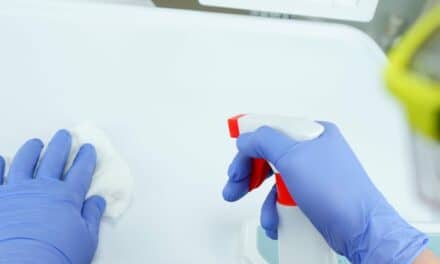AAMI has released a revised American National Standard containing new and crucial information for the manufacturers and users of personal protective equipment (PPE) in the healthcare space.
The new edition of the standard, ANSI/AAMI PB70:2022, Liquid barrier performance and classification of protective apparel and drapes intended for use in health care facilities, accounts for a decade of new knowledge and the evolution of technologies that aim keep frontline healthcare workers safe.
ANSI/AAMI PB70 specifies requirements for the performance of surgical gowns, isolation gowns, other gowns and protective apparel, surgical drapes, and drape accessories designed to protect healthcare workers during surgery and other healthcare procedures. That performance is based on the ability of these protective barriers to prevent exposure to blood, body fluids, and other potentially infectious materials. It also establishes an industry-wide classification system and associated labeling requirements for these various gowns and drapes.
“It is that variety of protective apparel that inspired many of the changes you will find in in this updated guidance document,” says Jill Holdsworth, manager of Infection Prevention for Emory University Hospital Midtown.
Holdsworth currently co-chairs the AAMI Protective Barriers (PB) Committee, which is responsible for the standard and developed the revised new edition. The PB Committee consists of experts hailing from manufacturing, academia, regulatory bodies, and the frontlines of healthcare.
“Barrier claims under the previous edition were limited to surgical gowns, surgical drapes, and isolation gowns,” says former committee co-chair Shane Woody, who served as the senior manager for the Global PPE Portfolio Strategy at Aspen Surgical during his tenure leading the committee developing the revision.
“As there are many other protective apparel products used in healthcare settings which provide barrier protection, it was necessary to add other categories of products for which PB70 barrier level claims could be made,” the Committee wrote. “This will allow healthcare professionals to have a better understanding of the barrier protection properties of the protective apparel items available.”
Additional protective apparel categories added to PB70 include:
- surgical gown–E – A specialized gown which provides extended protection of critical zones—defined as the areas where direct contact with blood, bodily fluids, and other potentially infectious material is most likely to happen.
- Non-surgical protective gowns including
- procedure gown
- decontamination gown
These non-surgical gown categories also include “protective full coverage gowns, protective gowns with non-protective backs, and protective gowns with open backs,” the authors explained. “Protective hoods and togas were also added along with a general category of other protective apparel items. (e.g., aprons, footwear covers, sleeves, etc.).”
Labeling requirements were also added for each of non-surgical gown, stating that the gown packaging should inform users of the area of protection:
- full coverage gown
- non-protective back gown
- open back gown.
The standard does not cover other types of PPE such as medical gloves, surgical masks, or goggles, nor is there an industry consensus for best practices concerning the gown-to-glove interface.
And while PB70 is intended to be used primarily by device manufacturers in qualifying, classifying, and labeling the barrier performance of their products, understanding the protective properties each label promises will also prove invaluable for healthcare professionals, so they may make informed decisions when selecting appropriate PPE.
A Post-Pandemic Project
With the protective barrier standard updated to reflect modern scientific and industry consensus, the PB committee is now turning its attention to gathering valuable information and lessons learned from the COVID-19 pandemic—a time when PPE shortages across the world left frontline healthcare workers unprotected.
The PB Committee’s pandemic preparedness task group is seeking additional members, data, and materials relevant to PPE practices during a time of emergency. Prospective participants are encouraged to contact [email protected].
“We have a learned a great deal from the COVID-19 pandemic’s successes and challenges, including the need for timely and consistence guidance in PPE and emergency preparedness,” says Holdsworth. “This group will be turning our focus to meeting this need for our members, healthcare providers, customers and the public.”




